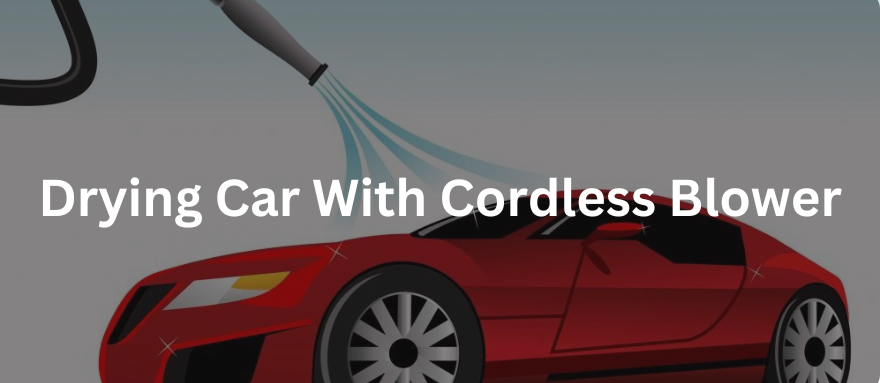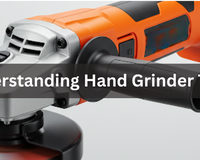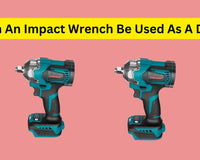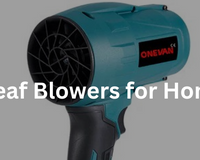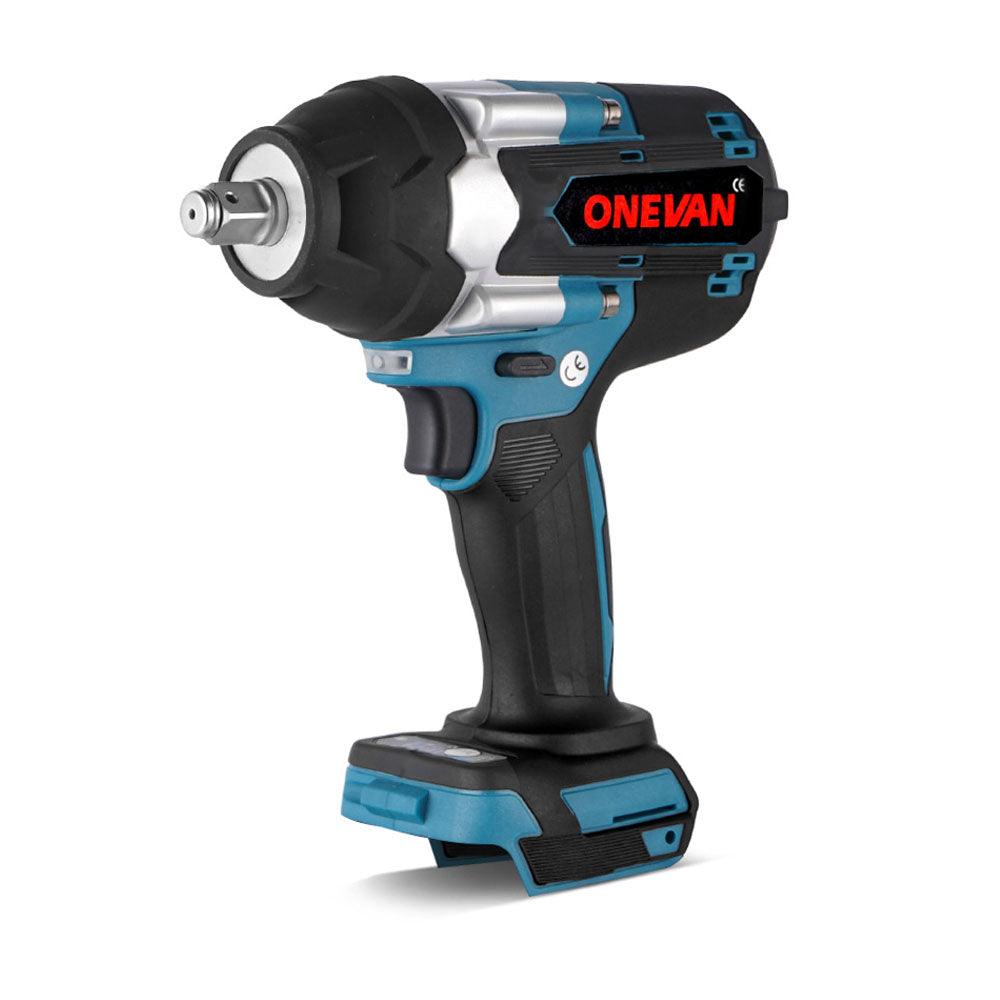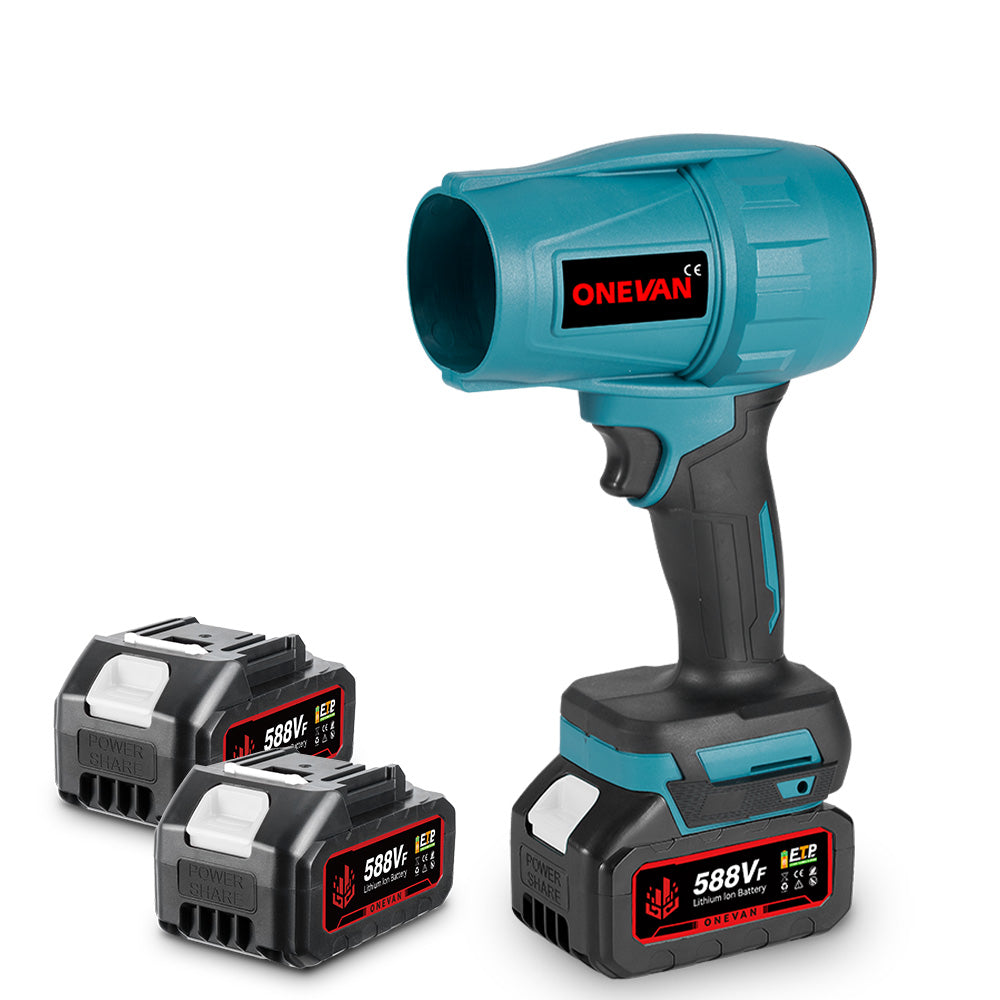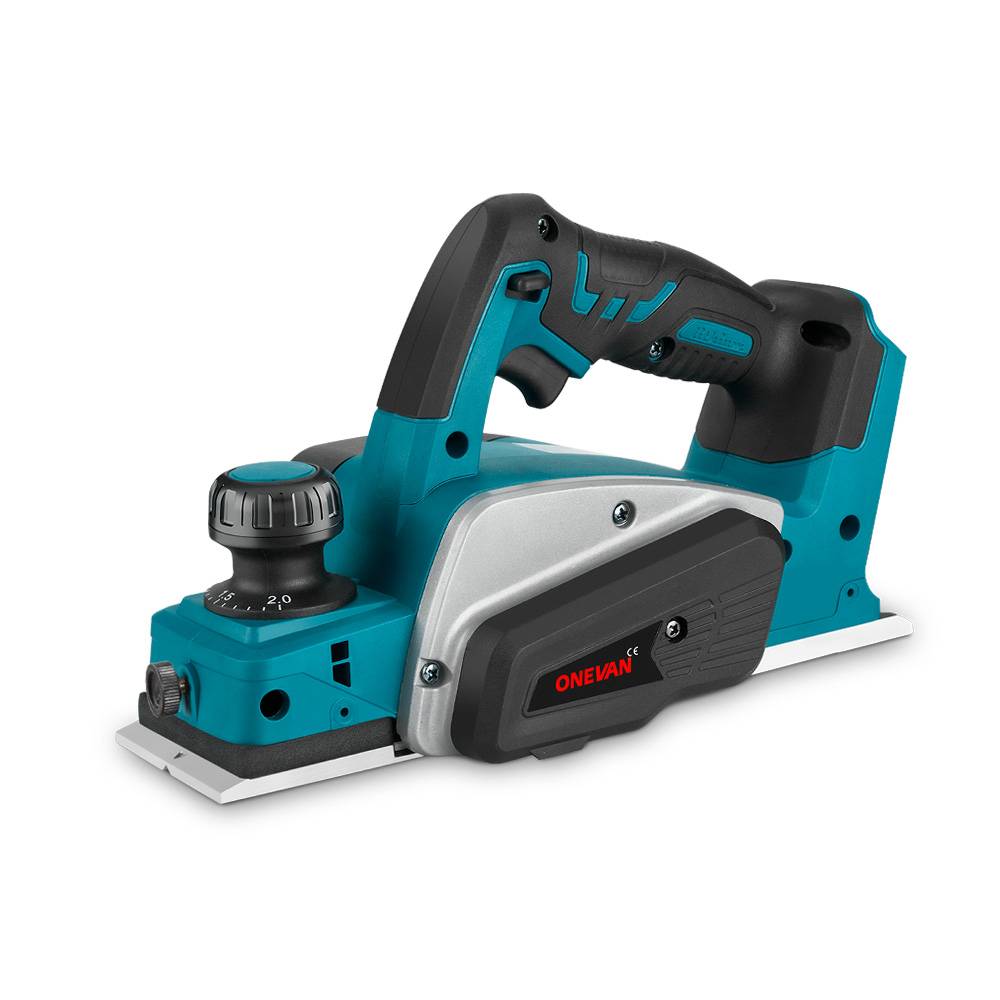Drying your car with a cordless leaf blower is a game-changer. It's a rapid, efficient, and environmentally friendly alternative to traditional towel or chamois methods. By following simple steps such as drying from the roof, applying sweeping back-and-forth motions, and adjusting the airspeed, you can achieve professional results. The most important thing is that a battery-operated blower saves time and secures you from unnecessary hassle while cleaning and drying a car.
What is a Cordless Blower?
A cordless blower is a portable, battery-operated power tool. It is designed to move air for various purposes, such as:
- Clearing leaves
- Debris
- Drying vehicles.
Cordless leaf blowers are proven to be a great alternative to corded models in terms of convenience, mobility, and performance.
1. Types of Cordless Blowers Suitable for Drying Cars
There are three types of battery blowers that can be used to dry the car.
- Cordless Handheld Blowers
- Cordless Backpack Blowers
- Cordless Full-Sized Handheld Blowers
Cordless Handheld Blowers
Not only are these blowers simple to use, but they are also compact and lightweight, making them excellent for reaching tight locations on your vehicle. Cordless handheld blowers are the best power tools for drying smaller cars or certain locations that need individual attention and care.
Cordless Backpack Blowers
When compared to portable variants, backpack blowers provide significant increases in both power and airflow. If you are running out of time and need to dry your vehicle quickly, then this is the best option. Backpack blowers also work perfectly for bigger cars. The design of the backpack reduces the operator's fatigue and ensure ultimate prolonged performance.
Cordless Full-Sized Handheld Blowers
These blowers pack the strength of a backpack model into a lightweight, handheld design. They're easy to use while still delivering plenty of airflow, giving you the best of both powerful performance and convenience.
2. Why Use a Cordless Blower to Dry Your Car?
Using a portable blower to dry your car can make the process quicker, more efficient, and more thorough. This method is kinder, faster, and more thorough, providing a beautiful, flawless finish. This method is better than using towels for drying because:
Micro-abrasions are Avoided: Towels can accidentally leave tiny scratches on your car's body. A blower moves air without physical contact, helping to dry the surface without causing micro-abrasions and maintaining the vehicle's shine.
Temporal and energy parsimony: Remember how long it took using a towel? A blower speeds up the drying process by a significant amount. It's an easy and quick way to get a car that's completely dried out without having to work hard.
Pinning down stubborn corners: Blowers are very good at getting into stubborn corners and crevices where water likes to gather. You no longer need to worry about missing spots or lines that look bad.
Relief of muscle strain: Drying things by hand can be complex on the body. A blower takes the stress off your arms and back, making the experience more relaxed and enjoyable.
3. Key Features to Look For When Using a Cordless Blower to Dry Your Car
Selecting a cordless blower to dry your car requires your attention and a little knowledge about certain features, let's discuss each quickly:
- Adjustable airspeed: It's super handy to have variable speed control. That way, you can crank up the airflow for big surfaces like the hood and turn it down for more delicate areas like mirrors or trim.
- Lightweight design: Go for something lightweight and comfortable to hold. It'll make a big difference, especially if you're spending a while drying your car. No one likes dealing with arm fatigue halfway through the job!
- Battery life: Do you have a battery that can dry your entire car, especially if you drive a larger vehicle like an SUV. A good battery means you won’t have to stop mid-job for a recharge.
- Nozzle attachments: Some blowers come with attachments better direct the airflow. These are great for getting into tight spaces or for focusing the air on specific spots.
- Rubberized nozzles: A blower with soft or rubberized nozzles is a nice touch. It helps avoid any accidental scratches while you're working near the paint.
4. Recommended Cordless Blowers for Dring Car
ONEVAN 2-in-1 Handheld Foldable Cordless Blower
Its 3500W motor delivers strong suction and wind power, the removal of dirt, debris, and water from your vehicle easy. You can customize the airflow to suit your needs with adjustable speeds and a 0-180° angle adjustment.
ONEVAN Turbocharged Brushless Blower Wind Machine
The blower's 128000 RPM rotation speed ensures efficient cleaning while blower's 1-1.2 kg blowing force provides ample power for removing stubborn dirt.
ONEVAN 6-Speed Adjustable Cordless Electric Blower
This cordless blower is a powerful cleaning tool with a maximum output power of 4500W and a maximum air volume of 8.8m³/min. Its 150m/s maximum wind speed and 0-46000 RPM rotational speed ensure efficient cleaning performance. The blower's 6 modes and 0-180° angle adjustment let you execute your tasks more conveniently.
ONEVAN Cordless 5-Speed Snow/Leaf Blower
Boasting a maximum output power of 5500W and a peak wind speed of 180M/S, it eliminates dirt, debris, and water from both outside and inside your car The blower's maximum air volume of 16 m³/min ensures efficient drying, while the five adjustable gears allow for tailored airflow according to individual task demands.
5. Safety Considerations Before You Start

Before grabbing your cordless leaf blower to dry your automobile, you should consider certain safety precautions. A little planning goes a long way toward ensuring that everything runs without incident and that you avoid inadvertently damaging anything.
Arrange Safety Equipment First
Make sure you are first sporting some simple protection gear. The key is eye protection; little trash, water, or dust may easily blow back at you. A decent set of goggles will protect your eyes. Gloves also help you maintain a solid grip on the blower and keep your hands dry and comfortable, whether the day is cold or you are handling wet areas.
Space Should Be Clear of Any Hazards
Clear the area surrounding your automobile first. Sort any tools, toys, or miscellaneous objects that could blow around. You want a neat, open area for work to prevent mishaps or debris from falling back onto your automobile.Try not to use the blower in places heavy in dust or leaves since you want none of that filth to recirculate on your just-cleaned automobile.
Make sure your automobile is properly cleaned before you consider drying it. Blasting air over any remaining dirt or grime will damage the paint. A proper wash prepares you for a scratch-free drying procedure.
Verify the Car Again Twice
Finally, take a moment to make sure your automobile is ready before you begin. Make sure all windows and doors are tightly closed to prevent water from entering the interior during the drying process. Also, look for loose elements—such as antennas or trim—that the blower's air may knock off. You are good to go once everything is safe!
6. Step-by-Step Guide to Drying Your Car with a Cordless Blower
Step 1: Arrange Necessary Equipment
It is paramount to gather everything you need to start the work
- Cordless leaf blower: Check that it's fully charged.
- Nozzles: You'll likely have a few options.
- Microfiber towel: For any remaining water spots.
Step 2: Charge the Blower
Ensure your blower is fully charged for optimal performance. A dead battery will interrupt your drying session.
Step 3: Choose the Right Nozzle
- Wide nozzle: Use this for large, flat surfaces like the roof or hood.
- Narrow nozzle: They are highly useful in tight areas of the vehicle like door jambs and mirrors.
Step 4: Begin Drying from the Top
Start at the roof and work your way down. This prevents water from dripping back onto areas you've already dried.
Step 5: Focus on Crevices and Hard-to-Reach Areas
The narrow and hidden spots of the car are often neglected during cleaning. You should use the narrow nozzle. The water that is trapped in door handles, side mirrors, and around windows may be removed with the help of a moderate spray of air.
Tip: Be careful not to overdo it. Excessive air pressure could cause water to spread out rather than evaporate efficiently.
Step 6: Be Mindful of Wind Direction
Pay attention to the wind, both from the blower and natural conditions. If the wind is blowing water back onto your car, adjust your position or the blower's direction.
Step 7: Check for Remaining Water Spots
Walk around your car and inspect for any lingering water droplets. A microfiber towel is perfect for these small touch-ups.
Step 8: Final Touch-Up
Use a low-speed setting or a microfiber cloth to gently dry any remaining water in small crevices. Avoid blowing water back onto dry areas.
Remember: A little patience and attention to detail will ensure a sparkling clean car.
7. Common Mistakes to Avoid When Using a Cordless Blower
Although drying your vehicle with a cordless leaf blower may be a great time-saver, you should avoid a few typical mistakes compromising your efforts. Let's investigate these dangers so you can safeguard your car and get the ideal outcomes.
Wrong Nozzle Attachment
One of the first blunders one should avoid is using the wrong nozzle attachment. Every nozzle is meant for a specific job, so utilizing the correct one will have a significant impact. Choose a flat or wide nozzle for drying your automobile to provide more excellent airflow. While a smaller nozzle might help aim hard-to-reach areas, this will assist you in effectively flowing water off big surfaces.
Ignoring Cleaning the Blower First
Spend some time looking over your blower before you begin. Ensure the air intake and nozzle are clear of dirt and trash. A brief wipe-down can help avoid particles blowing onto your just-cleaned automobile, preventing scratches or blebs. A clean blower helps avoid particles that could mar the finish of your car.
Drying in Direct Sunlight
Another frequent mistake is trying to dry your automobile in direct sunlight. Too rapid water evaporation brought on by solar heat might result in ugly water spots. Instead, locate a dark spot or wait for the sun to lower in the heavens. This will enable you to have a streak-free gloss without spot treatment.
Starting from the Bottom
Regarding drying your automobile, always start at the top and work your way down. Start with the top, then go through the hood, trunk, and sides. This approach lets gravity help you; it stops water from seeping into previously dry regions. This basic yet efficient approach will save you time and effort.
Overusing Air Pressure
Although turning up the blower to its maximum level might be tempting, it will cause more difficulties than it solves. Too much air pressure could cause water to bounce back onto the automobile's surface, undermining your drying efforts. Starting at a modest level, change as needed to control the airflow.
Not Maintaining a Safe Distance
The blower's nozzle should be kept safely apart from the surface of your automobile. Getting too close might blow water back onto the paint or harm fragile trim or emblems. Keep the nozzle at least six inches from the surface for the best results.
Neglecting Difficult-to-Reach Areas
Pay attention to challenging areas where water often gathers, like behind mirrors, wheel wells, and door jammers. Spend some time guiding airflow into these spaces to guarantee complete drying of these surfaces. With more care, a pristine finish may be achieved, significantly impacting.
Post-Drying Examine Failure
After you've dried your automobile, quickly, once over it, search for any leftovers, maybe missing water droplets or streaks. If you find any, carefully clean them with a fresh microfiber cloth. This last check guarantees your automobile looks perfect.
Not Checking The Battery Life Before Use
Verify the battery life of your cordless blower twice before starting. Nothing is worse than having your blower die midway through a task. Always have a backup battery on hand, especially if you plan to dry multiple automobiles or handle a bigger vehicle.
Overlooking Bad Weather
Finally, consider the weather before you start. Avoid using the blower on windy days, as gusts might sweep dirt and trash back onto your vehicle. Be careful in freezing conditions, as water could freeze on the surface and cause harm.
8. Conclusion
Car drying looks a simple job. However, you often neglect the important areas which are hard to reach manually. A cordless blower can save your time and make car cleaning hassle-free. This article carries all the information you need to make your work faster, smoother, and more professional such as safety precautions, important steps, and possible mistakes to avoid.
9. FAQs
1.Is there any specific blower or I can use any type of cordless blower to dry my car?
Many cordless blowers are recommended to dry your car. However, more specific battery blowers are designed for automotive cleaning purposes such as adjustable airflow and extended battery life.
2. Does a cordless blower remove all water from narrow areas?
Yes, but employ the narrow nozzle. Cordless blowers with narrow nozzles are more effective in penetrating crevices and hard-to-reach points.
3. Is a cordless blower effective for drying large vehicles like trucks or SUVS?
Yes, but anticipate a more prolonged drying time. Cordless blowers can dry large vehicles, but it may necessitate additional time and effort.
4. How does a cordless blower compare to an air compressor for car drying?
Cordless blowers are generally more expedient and convenient. Air compressors can be noisy and require a more intricate setup.
5. Will using a cordless blower increase the likelihood of water spots?
No, cordless blowers are engineered to dry without leaving water spots.
6. Can a battery blower dry the engine bay or undercarriage of my car?
Avoid using a blower on the engine bay or undercarriage. Water can infiltrate sensitive areas and cause damage.
7. Does using a cordless blower affect the wax or sealant on my car?
No, cordless blowers should not adversely impact wax or sealant.
8. What’s the ideal speed or airflow setting to use when drying my car with a cordless blower?
Experiment to ascertain the optimal setting. Factors such as vehicle size and water quantity influence the ideal speed and airflow setting.
9. Can I use a cordless blower to dry a ceramic-coated car?
Yes, but employ a lower airflow setting. Ceramic coatings can be sensitive, so avoid excessive force.
10. What should I do if my cordless blower isn't powerful enough to fully dry my car?
Consider acquiring a more potent model or utilizing a microfiber towel for finishing touches.

